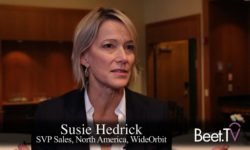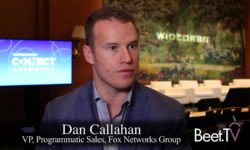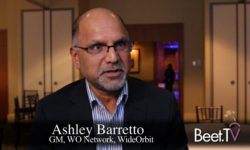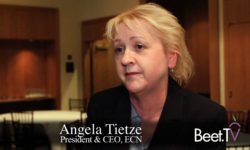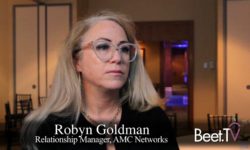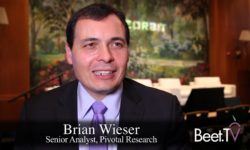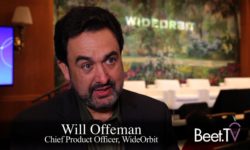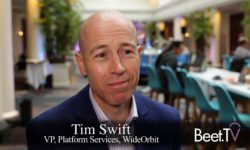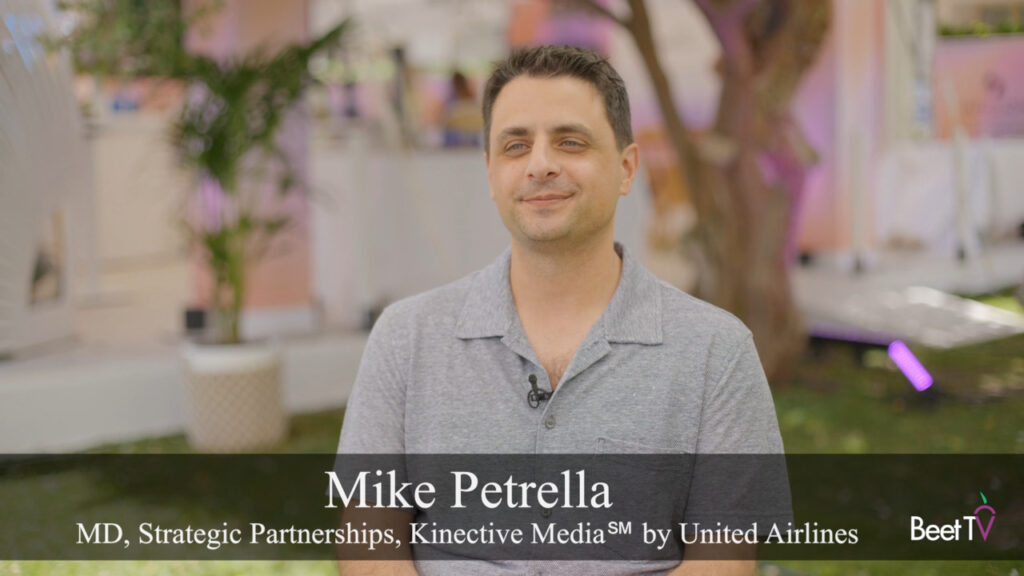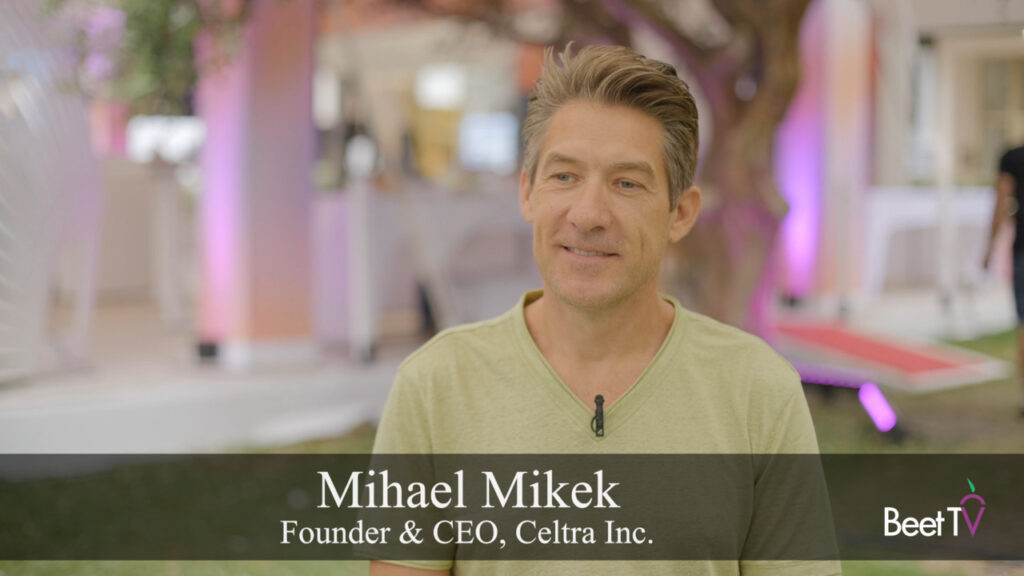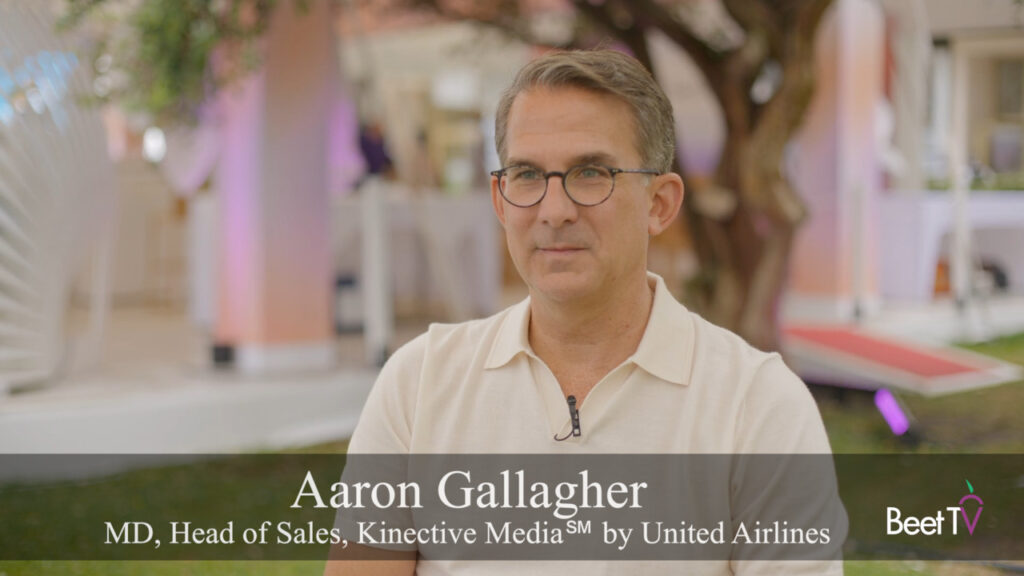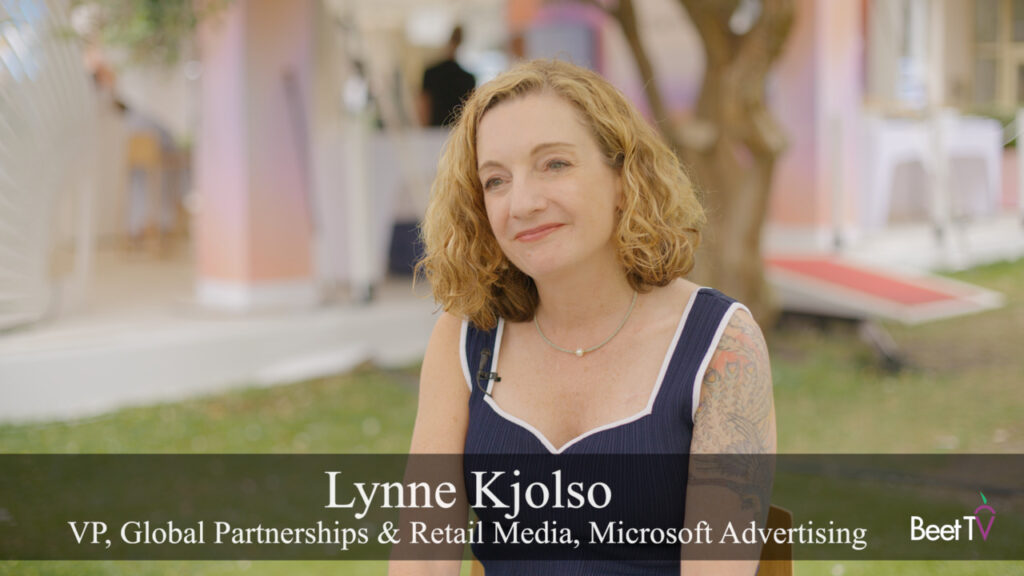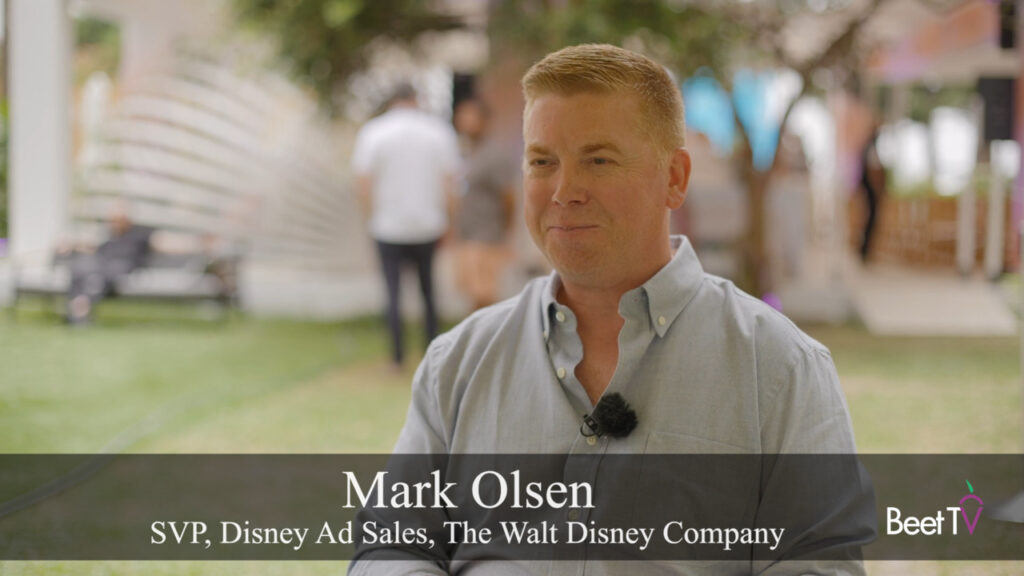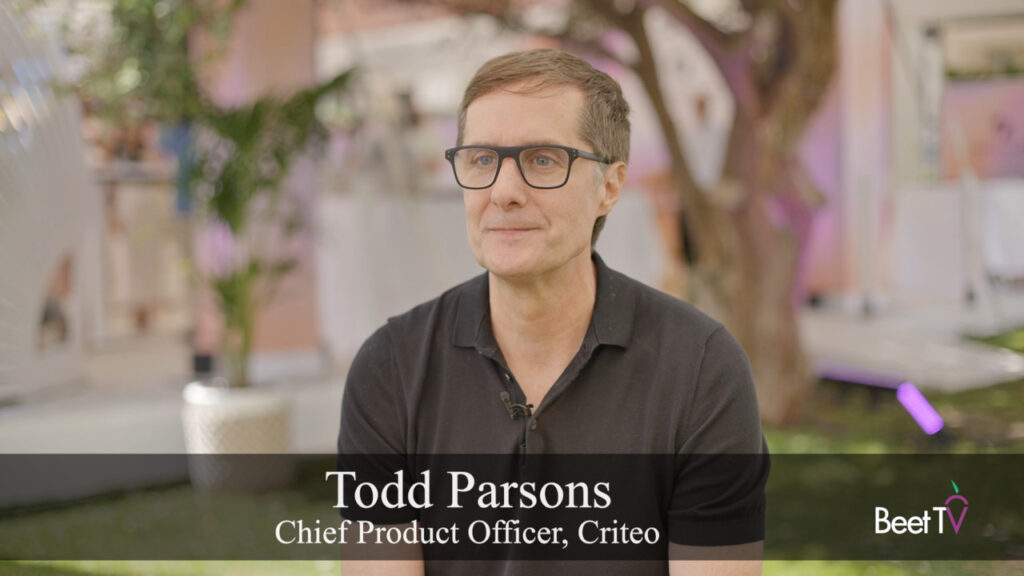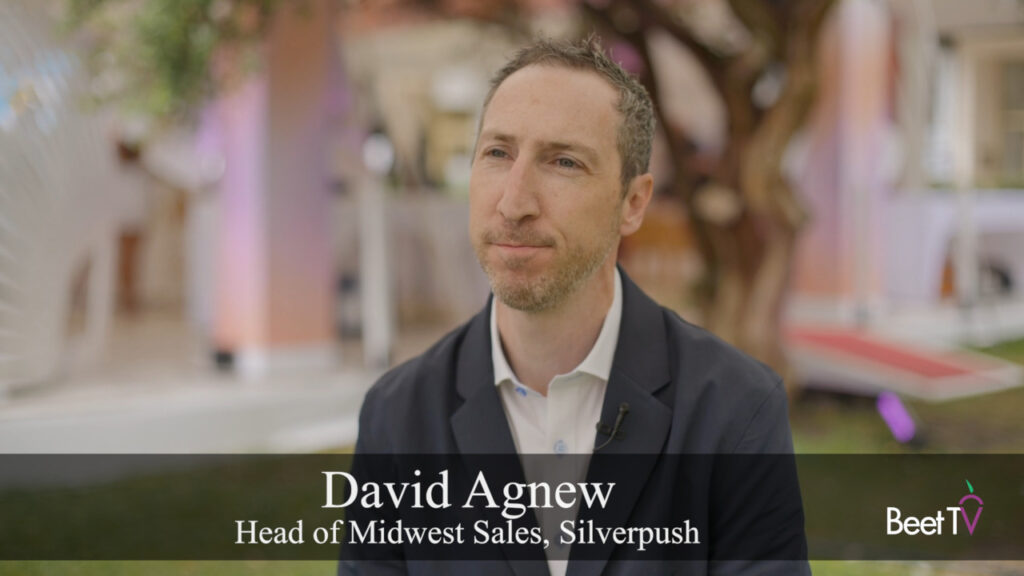SAN FRANCISCO – Over the past two decades, there’s been a lot of progress made in removing friction from the local television and radio buying process. But it typically doesn’t pay for agencies to buy local media, so even more automation is on the way, according to WideOrbit’s Eric Matthewson.
WideOrbit was founded 18 years ago to rebuild the systems that supported local media, Founder & CEO Matthewson explains in this interview with Beet.TV at the WideOrbit Connect conference. Now the company is the backbone for more than 90% of local TV stations and about half of local radio stations.
On the national side—which is pretty much another world from local TV and radio—WideOrbit is the pipeline for about 30% of national cable TV networks. “We run their backbone ad systems from order entry to receipt of cash,” Mathewson says of WideOrbit’s clients.
While there are many reasons to increase transactional automation, an elemental one stems from the way local advertisers compensate their agencies to plan and buy local TV and radio inventory, according to Mathewson. The rates are so low, “they really don’t make money on local broadcast compared to the more efficient buying processes in digital and national.”
Asked about the term programmatic and its utility in local media, Mathewson draws a distinction between digital and its real-time bidding for advertising inventory, along with audience targeting. In linear media, with traditional TV or radio buying schedules, “there’s not a real-time nature to it and there’s not typically a one to-one-targeting.”
This will change with the impending rollout of the broadcast standard known as ATSC 3.0, according to Mathewson.
In the meantime, he believes the best way to define programmatic is “improving automation and adding data to local broadcast television and radio buying.”
He also draws a distinction between traditional arbitrage in local TV and radio and true programmatic transactions.
“Some of our competition has kind of put lipstick on that and called it programmatic,” Mathewson says of arbitrage. “I would argue it’s really not automation. It’s really changing their marketing description and adopting the programmatic title.”
In making the local buying process more efficient, WideOrbit seeks to provide both buyers and sellers with better pricing information and targeting information for aggregating audiences as opposed to dayparts and age/gender demographics.
While the backbone of local media has long been smaller advertisers like local car dealers and quick-serve restaurants, others have discovered the space to their advantage.
“We’re though also finding direct-to-consumer models, venture-backed models, that are not geographically dependent are using local television and being very, very successful at it.”
This video is part of a Beet.TV series on advanced TV produced at the WideOrbit Connect conference. WideOrbit is the sponsor of this series. Please find more videos here.






